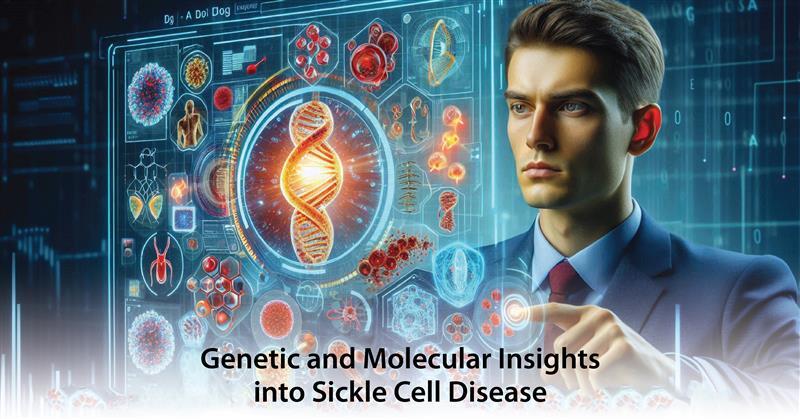Sickle cell disease is a congenital disease of the blood that has presented a lot of complications to researchers due to its peculiarity, particularly among the Black African fraternity. What stands as the core of this condition is hemoglobin S, a crescent hemoglobin that deforms normal red blood cells into this sickle form upon leaving the oxygen. These abnormally shaped red blood globules lead to events of severe painful feelings, anemia, and toxicity of organs. Some new findings from the developed genetic and molecular studies help to increase the knowledge about the disease to a certain extent, the development of new therapies in this particular area, and the favorable prognosis for the patients. This paper focuses on the genetic shifts, the molecular mechanisms, as well as the newly developed diagnostic methods and treatment measures of sickle cell disease.
Molecular Genetic Root Cause of Sickle Cell Disease
Sickle cell disease results from a single nucleotide substitution, leading to a changed amino acid, absent in the beta-globin (HBB) gene located on the 11th chromosome. This leads to the replacement of the amino acid valine for glutamic acid at the sixth position of the beta-globin chain, resulting in hemoglobin S. The inheritance of two copies of mutated genes coming from the parents makes SCA, which is the worst form of the disease. People who are ‘carriers’, that is, have one normal gene and one mutant gene, which is a sickle cell trait that, however, does produce symptoms if the patient is exposed to certain conditions, such as extremely anemic conditions.
It is possible to identify that the pathogenesis of SCD is very elaborate and involves various factors. The main process is the precipitation of deoxygenated hemoglobin S, and it causes the red blood cells to become morphologically abnormal and rigid or sickle-shaped. These are sickle-shaped red blood cells and are more likely to break and burst; thus, they have a shorter life span, resulting in chronic hemolytic anemia. Furthermore, the abnormal outer membrane distorts its movement and trapping in the region of microvasculature, which results in vaso-occlusion followed by ischemic tissue/organ damage.
These primary events are followed by effects such as inflammation, oxidative stress, and ED. These sickle-shaped red blood cells stick to the inner lining of blood vessels, leukocytes, and platelets, which aggravates the blockage of blood vessels. This process evokes a series of inflammatory reactions associated with acute pain crises and chronic organ affection in SCD individuals.
